Hummingbirds
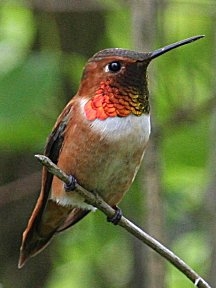
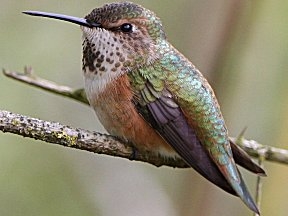 Hummingbirds are among the smallest of creatures. Found only in North, Central and South America, hummingbirds weigh less than an ounce (or as much as 1 penny!), migrate immense distances and are the only birds that can hover and fly backwards. Our summer resident hummingbird (as well as the most common hummer throughout BC) is the Rufous Hummingbird. They are the only male hummingbirds (right) that are a rufous-brown and white with a red gorget. Female birds (left) also have rusty flanks and rust on their tail along with the green and white colours of most female hummingbirds They arrive in the Abbotsford/Chilliwack region anytime after the middle of March and stay until the end of August (most begin
Hummingbirds are among the smallest of creatures. Found only in North, Central and South America, hummingbirds weigh less than an ounce (or as much as 1 penny!), migrate immense distances and are the only birds that can hover and fly backwards. Our summer resident hummingbird (as well as the most common hummer throughout BC) is the Rufous Hummingbird. They are the only male hummingbirds (right) that are a rufous-brown and white with a red gorget. Female birds (left) also have rusty flanks and rust on their tail along with the green and white colours of most female hummingbirds They arrive in the Abbotsford/Chilliwack region anytime after the middle of March and stay until the end of August (most begin 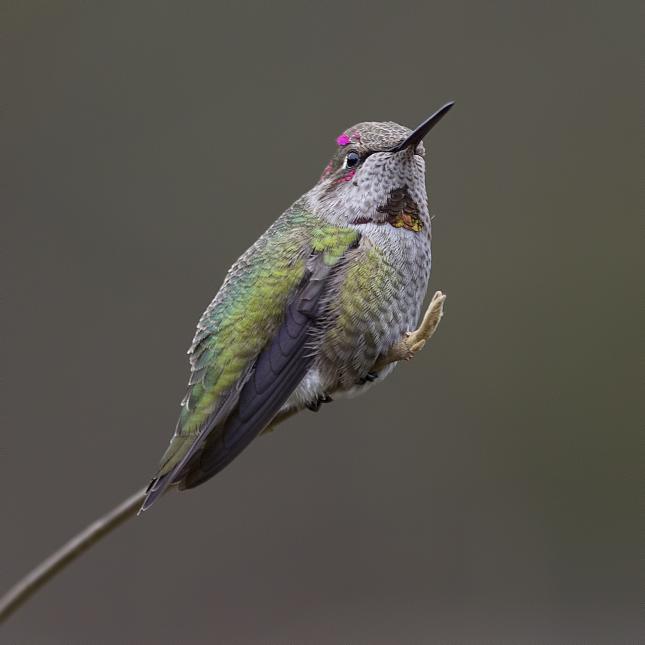 to make their way south by the end of July). Anna's Hummingbirds are very common in the coastal regions of the province and are steadily making their way eastward. Larger and stockier than the Rufous, they are mainly green and white birds. Males have a vivid fushcia head and throat (right) while the females have a definite small gorget and sometimes pink feathers scattered
to make their way south by the end of July). Anna's Hummingbirds are very common in the coastal regions of the province and are steadily making their way eastward. Larger and stockier than the Rufous, they are mainly green and white birds. Males have a vivid fushcia head and throat (right) while the females have a definite small gorget and sometimes pink feathers scattered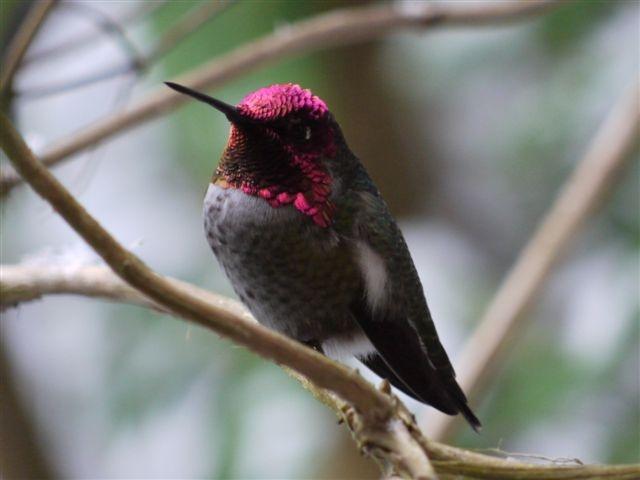 over their head (left). It is not uncommon in the Fraser Valley to have the Anna's hummingbirds all year. Depending on where you live, you may also have Calliope (mountainous regions) and Black-Chinned hummingbirds.
over their head (left). It is not uncommon in the Fraser Valley to have the Anna's hummingbirds all year. Depending on where you live, you may also have Calliope (mountainous regions) and Black-Chinned hummingbirds.
The Perfect Nectar Recipe
It is very important to supply the hummingbirds with the correct concentration of sugar:water solution in the hummingbird feeder. The 4:1 ratio of water and white sugar most closely resembles the nectar they obtain from the flowers. Anything stronger than a 3:1 ratio is difficult for the hummingbird's bodies to break down and can result in dehydration and kidney damage.
NECTAR RECIPE
The Following is recommended by the Experts:
* Boil 4 parts water , remove from heat and then add 1 part sugar until sugar dissolves. Boiling the water is not necessary but if you are using water that has a high concentration of chlorine or other chemicals it is a good idea.
*Let cool, then use in your hummingbird feeder.
*Store in rest of solution in refrigerator.
*Change in cool weather once a week
*Change in warm weather twice a week
*Change in hot weather three times a week
NOTE: Do not use any food coloring. Do not use anything other than white sugar. Do not use brown sugar, organic sugar or molasses.
Hummingbirds and You
Hummingbirds have fantastic memories. They are capable of remembering where flowers and feeders were found the previous year and then go to that exact same spot. If they don't find a feeder there yet, they will certainly let you know! So don't forget, hang your feeder just before your hummers are due to arrive.
Hummingbirds, especially Rufous, are ounce for ounce one of the most aggressive birds. They will claim as many feeders as possible and keep busy chasing away all other hummingbirds. If this happens to your yard, the best solution is to hang several feeders, making sure that the resident hummer cannot see all feeders at one time. This will allow other birds a chance to feed.
Picking the Correct Feeder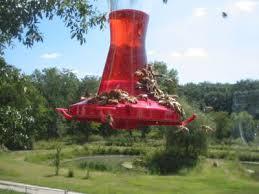
With so many feeders on the market, it can be confusing choosing one that works the best. The answer is very simple; chose one that you can clean easily and doesn't leak.
Avoid pretty feeders that have a glass down-spout. These will always leak and cause either a "red flag" for an ant invasion or just make a real mess. Also avoid feeders that have too many small crevices or corners. These will be impossible to clean.
Avoid feeders that have yellow on them. Yellow is attractive to bees and wasps and you may find more of those insects at your feeders than the hummingbirds.
Click on the link below to see the best hummingbird feeder you can find, the WBU Hi Perch.
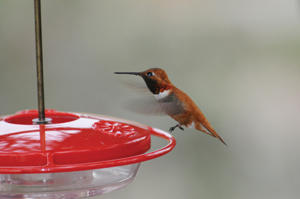
The best feeders are basin style. These feeders have a flat bottom and a top that simply lifts off - no crevices to trap old solution. Most are made from a durable, polycarbonate that resists fading from UV exposure, keeping its red colour that the hummingbirds love for years. A basin feeder will not leak and usually have perches for the birds to use while feeding. Studies have found that if a hummingbird can perch, they will feed longer (as long as they don't feel the need to constantly patrol every feeder!)
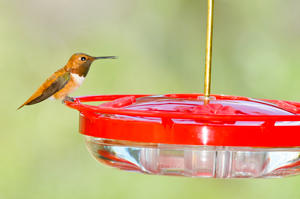 WBU Hi Perch Feeder
WBU Hi Perch Feeder
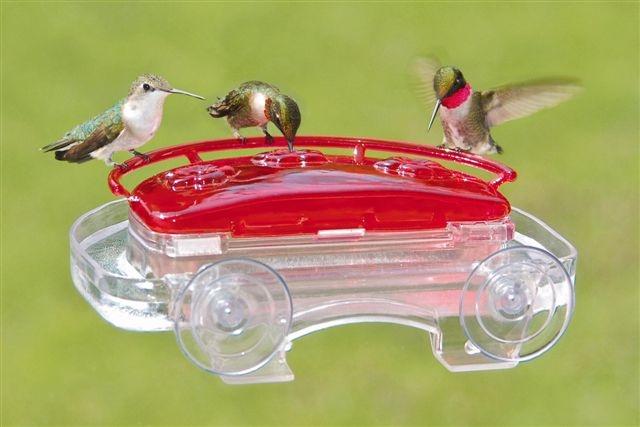 WBU Window Feeder
WBU Window Feeder
 WBU Decorative
WBU Decorative
Parasol Glass Hummingbird Feeders
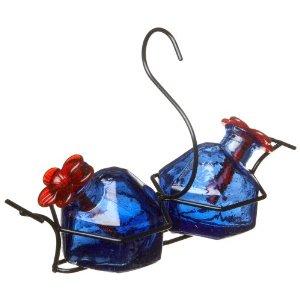
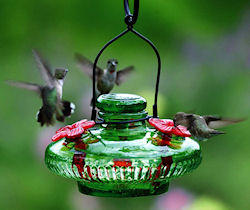
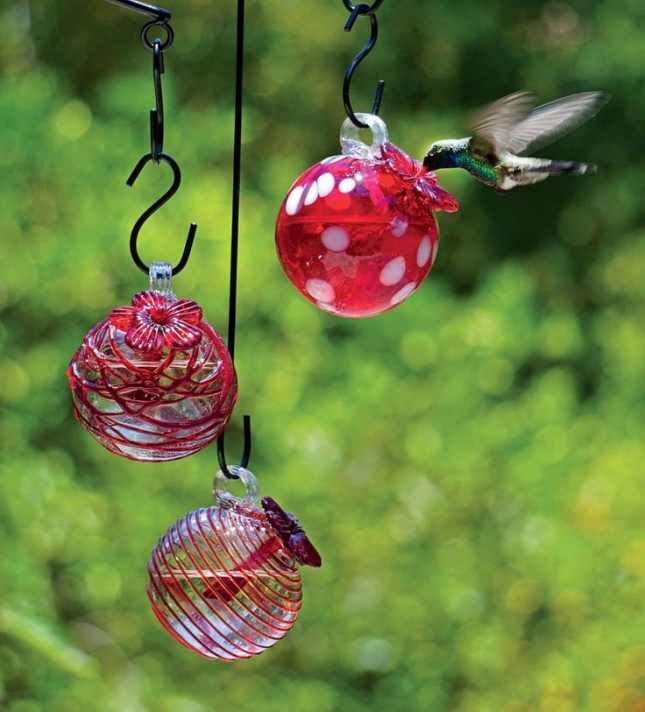
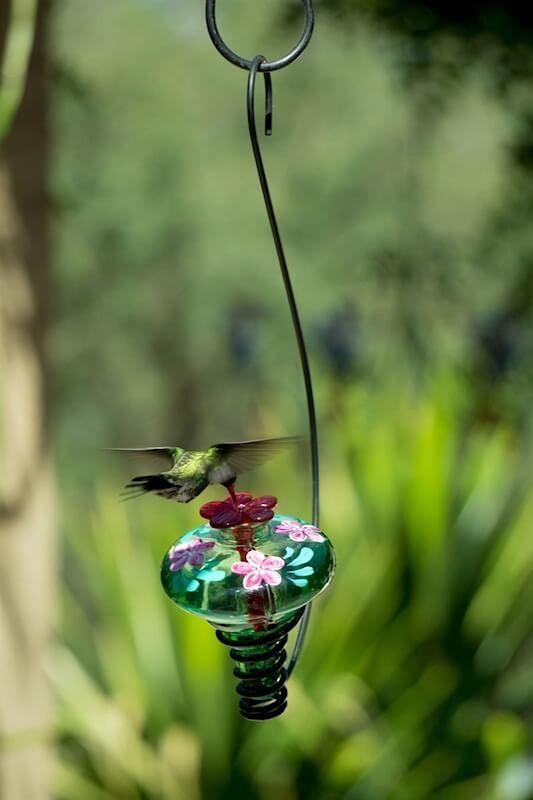
Other Hummingbird Feeders; Best-1 (top), First Nature (centre), Dr. JB (bottom)

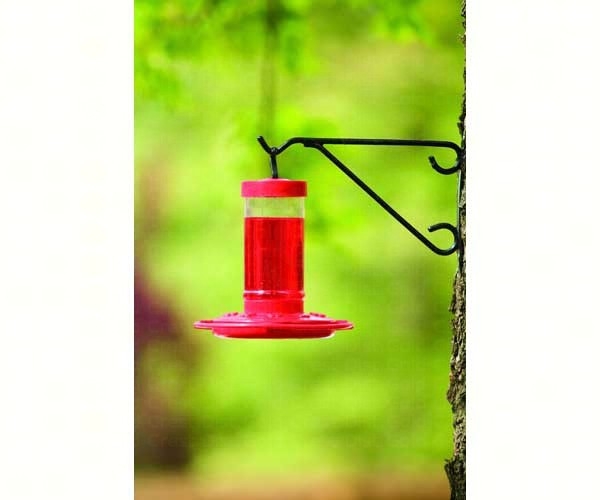
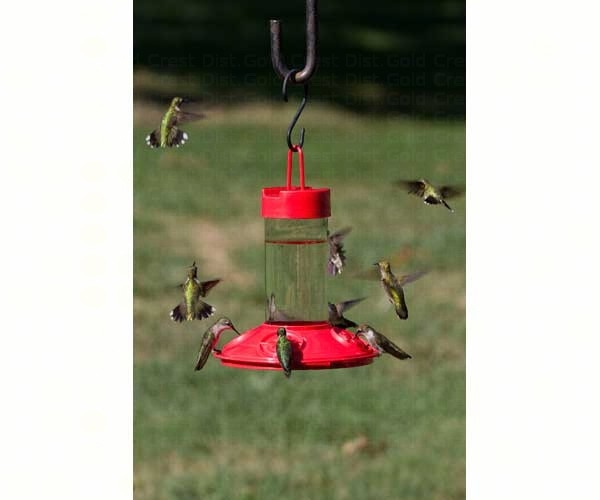
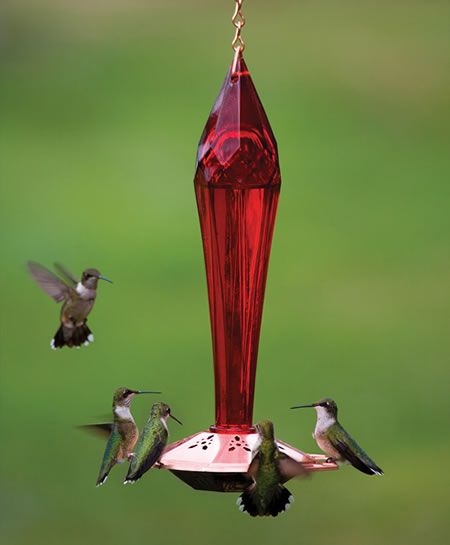 Schrodt Glass Feeder
Schrodt Glass Feeder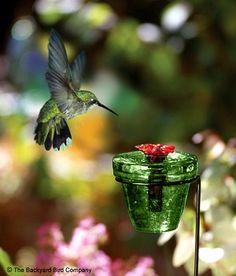
If you are having trouble bringing hummingbirds to your feeders, you may wish to consider a stake feeder. These feeders can be placed in a flowering area that your hummingbirds love to feed from. And since the feeder is at the same level as their favourite flowers, they very quickly begin to feed from both.
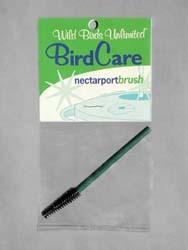
 Cleanliness is extremely important when feeding hummingbirds. Fermented nectar occurs when the solution sits too long in the feeders and it is dangerous to hummers, harboring dangerous molds, mildew and toxins. Any hummer attempting to drink from these feeders will leave and possibly not return so it is important to remove any trace of fermented syrup or mildew before refilling. To do this, use a port brush to get into the small openings and use a small amount of vinegar in hot soapy water to clean the entire feeder thoroughly. The vinegar will work just as well as bleach but without bleach's harmful side effects. Rinse well before hanging your feeder back out.
Cleanliness is extremely important when feeding hummingbirds. Fermented nectar occurs when the solution sits too long in the feeders and it is dangerous to hummers, harboring dangerous molds, mildew and toxins. Any hummer attempting to drink from these feeders will leave and possibly not return so it is important to remove any trace of fermented syrup or mildew before refilling. To do this, use a port brush to get into the small openings and use a small amount of vinegar in hot soapy water to clean the entire feeder thoroughly. The vinegar will work just as well as bleach but without bleach's harmful side effects. Rinse well before hanging your feeder back out.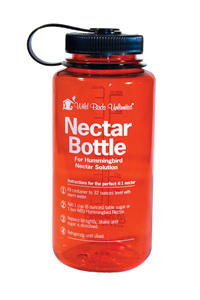
And don't forget about their food! The sugar solution needs to be four parts water to one part sugar. This concentration closely resembles the sucrose that hummingbirds find in the flowers they feed from. Any mixture that is a higher concentration than 3:1 can be dangerous for the small birds. If there is too much sugar, they will find it difficult to break it down in their bodies, leading to dehydration and possible kidney damage. Also, the heavy syrup that occurs in a thick mixture of sugar and water can coat their tongues and make it almost impossible for them to feed.
Only use white sugar or a hummingbird sugar like ones we carry in our store when making food for your hummingbirds. Brown sugar, molasses or honey can make the birds sick and do not use any hummingbird solution that contains red dye. Although it has not been proven that red dye is harmful to hummingbirds, we believe that is better to err on the side of caution and not give our little friends any chemicals in their food.
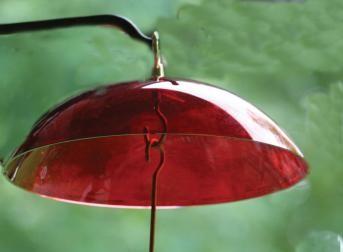
It is always important to keep your feeders filled with fresh solution. The sugar-rich nectar can become a "toxic alcohol" when exposed to sunlight, as well as be filled with molds, bacteria and other microbes. We advise that you change the feeders regularly; weekly in spring-like conditions; twice a week when temperatures are around 20 C and every second day when it is 30 C or higher. Placing a dome over your feeder will help shade it from the sun (it will also keep the rain off it during the wet months) and keep it from getting too hot.
 We also recommend adding Hummingbird Feeder Fresh Nectar Defender to your solution. It is a micro-
We also recommend adding Hummingbird Feeder Fresh Nectar Defender to your solution. It is a micro-![]() nutrient mineral that will stop the spoilage from occurring and keep your feeder fresher, longer. The micro-nutrient is naturally consumed by the hummingbirds (found in fruit flies!) so it is safe to use. We now carry boxed sugar and liquid ready-to-use solution with Nectar Defender already added. This makes it very easy to ensure that your hummingbird nectar is always safe for your birds. Keep any extra sugar solution in the refrigerator in a WBU Nectar Bottle.
nutrient mineral that will stop the spoilage from occurring and keep your feeder fresher, longer. The micro-nutrient is naturally consumed by the hummingbirds (found in fruit flies!) so it is safe to use. We now carry boxed sugar and liquid ready-to-use solution with Nectar Defender already added. This makes it very easy to ensure that your hummingbird nectar is always safe for your birds. Keep any extra sugar solution in the refrigerator in a WBU Nectar Bottle.
The best way to attract hummers to your yard is to make it "hummingbird friendly". Hummers are woodland birds and need a variety of flowers and small insects to feed, not an urban jungle. Using plants in your yard that hummers like (wild flowering currant, honeysuckle, fuschia, bee balm, nictonia for example) is a good start. Avoid using chemicals in your yard as well.

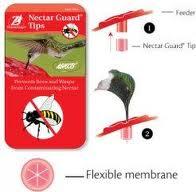
Bees, wasps and ants love the sugar solution as well. Avoid feeders that have yellow on them, bees and wasps like those. To keep ant out, an ant moat is helpful. These are hung above your feeder and filled with water. Nectar guard tips will also keep out all three insects. These tips fit inside the feeding port holes and make the opening too small for anything bigger than an hummingbirds' tongue.
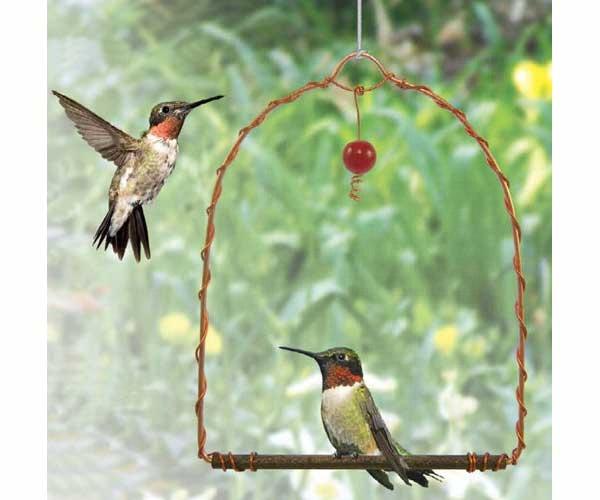
Everything deserves some fun every now and then. The hummingbird swing will give both you and your hummingbirds just that. Hang the swing near your hummingbird feeder and then sit back. Your feisty little friends will have a new spot to patrol their favourite feeders while they swing gently back and forth and you will (for once) be able to observe your birds easily.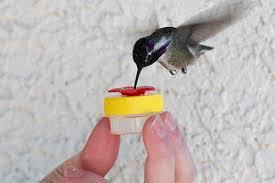
And another way for both you and your birds to have fun is to use a Nectar Dot Hand Held Hummingbird Feeder! What better way to experience your favourite bird than have it feed out of your hand.
Hummingbird Facts
- There are more than 300 species of hummingbirds of which only 2 are found here in the Fraser Valley.
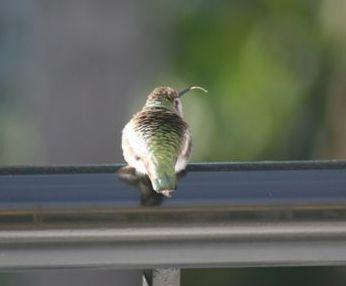
- The Ruby-throat Hummingbirds weights less than one-tenth of an ounce, 1/5 the weight of a chickadee.
- Hummingbirds can fly up to 45 miles an hour and their wings can beat up to 200 times per second.
- A hummingbirds heart beats 1260 times per minute and while resting takes 250 breaths per minute
- Hummingbirds will consume half their weight in sugar each day from flowers and feeders, if we had the
metabolism of a hummer we would eat 285 lbs of hamburger a day! - Hummingbirds can live up to 12 years although many only live 3 to 5 years
- A Hummingbirds tongue is very long, long enough to reach down into the neck of their favourite tubular flowers

